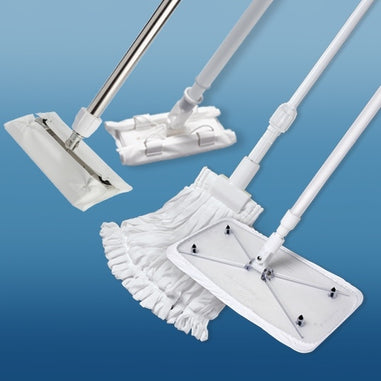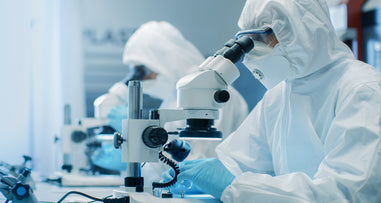- No products in the cart.
In today's rapidly advancing technological landscape, industries such as electronics, pharmaceuticals, biotechnology, and nanotechnology heavily rely on cleanroom environments to ensure the production of high-quality and contamination-free products. Among the various types of cleanrooms, cleanroom dry rooms stand out as critical spaces for industries where even the slightest particle or moisture contamination can result in costly setbacks. In this comprehensive guide, we will delve into the intricacies of designing and maintaining cleanroom dry rooms, shedding light on the crucial factors that contribute to their efficiency and effectiveness.
Understanding Cleanroom Dry Rooms
A cleanroom dry room is a controlled environment that maintains extremely low levels of humidity and particulate contamination. These conditions are vital for industries like semiconductor manufacturing, precision optics, and pharmaceutical production, where even minute particles or humidity can lead to product defects and compromised quality.
Designing an Effective Cleanroom Dry Room
1. Classification and Standards
Cleanrooms are classified based on the maximum allowable particle count per cubic meter. The classification determines the stringency of the cleanliness requirements. For cleanroom dry rooms, adherence to ISO 14644-1 standards is essential, which specifies particle limits for various cleanroom classes.
2. Facility Location and Layout
The location of the cleanroom within a facility plays a significant role in minimizing external contamination sources. Ideally, cleanroom dry rooms should be situated in low-traffic areas, away from external doors, and sources of moisture. The room layout should ensure efficient airflow patterns, minimizing the risk of cross-contamination.
3. HVAC System Design
The heating, ventilation, and air conditioning (HVAC) system is the heart of any cleanroom dry room. The HVAC system controls temperature, humidity, and airflow, maintaining the desired conditions. Specialized HVAC systems with dehumidification capabilities are crucial to achieve and maintain low humidity levels.
4. Air Filtration
High-efficiency particulate air (HEPA) and ultra-low penetration air (ULPA) filters are critical components for particle control. These filters remove particles as small as 0.3 micrometers and 0.12 micrometers, respectively, ensuring the air entering the cleanroom dry room is exceptionally clean.
5. Materials and Surfaces
Construction materials and surfaces within the cleanroom dry room should be non-porous, easy to clean, and resistant to chemicals. Smooth finishes reduce particle accumulation and facilitate cleaning procedures.
6. Electrostatic Discharge (ESD) Control
In industries like electronics and semiconductor manufacturing, ESD protection is vital. Implementing ESD-safe flooring, workstations, and equipment prevents static discharge, which can damage sensitive components.
Maintaining Cleanroom Dry Rooms
Designing a cleanroom dry room is only the first step; maintaining its functionality and cleanliness is an ongoing process. Regular maintenance ensures that the room consistently meets the required standards.
1. Monitoring Systems
Installing monitoring systems for temperature, humidity, particle counts, and pressure differentials is essential for real-time assessment. These systems trigger alarms if conditions deviate from the desired range, allowing for quick corrective actions.
2. Cleaning Protocols
Establishing strict cleaning protocols is imperative. Regular cleaning should follow industry best practices, using approved cleaning agents and procedures. Cleaning should be performed in stages, starting from the cleanest areas and moving towards less clean sections.
3. Personnel Training
Cleanroom dry room personnel must be well-trained in contamination control protocols, gowning procedures, and proper behavior within the controlled environment. Training programs should be regularly updated to ensure compliance with the latest standards.
4. Regular Testing and Validation
Scheduled testing and validation procedures are necessary to ensure the cleanroom dry room's continued compliance with cleanliness and environmental requirements. This includes particle count measurements, air velocity testing, and filter integrity testing.
5. Emergency Preparedness
Developing contingency plans for potential emergencies, such as HVAC failures or power outages, is crucial to prevent contamination and product loss. These plans should outline steps for maintaining cleanliness and restoring optimal conditions.
Dry Cleanroom Supplies for Maintenance
Maintaining the stringent cleanliness and controlled conditions of a cleanroom dry room necessitates the use of specialized supplies and equipment designed to minimize contamination risks. These supplies play a pivotal role in the regular cleaning and upkeep of the environment. Here is a compilation of essential supplies required for maintaining a dry cleanroom environment:
- Microfiber Wipes and Lint-Free Swabs: These specialized tools are used to gently remove particles from surfaces without leaving behind fibers or lint that could contaminate the environment.
- Tacky Mats: Placed at entry points, tacky mats capture and retain particles from shoes and wheels, preventing them from being tracked into the cleanroom dry room.
- 100% Isopropyl Alcohol and Approved Cleaning Agents: These substances are carefully selected for their effectiveness in removing contaminants without introducing additional residue that might compromise product quality.
- Sterile Gloves and Cleanroom Apparel: Personnel wear sterile gloves, coveralls, hoods, and shoe covers to minimize the introduction of particles from clothing and skin, maintaining the room's cleanliness.
Innovations in Cleanroom Dry Room Design
As technology advances, so do the methodologies and technologies used in cleanroom dry room design and maintenance. Some notable innovations include:
1. Nanotechnology in Filtration
Advancements in nanotechnology have led to the development of more efficient and compact filtration systems. Nanofiber-based filters, for instance, offer enhanced particle capture and lower pressure drops.
2. Smart Monitoring Systems
IoT-based monitoring systems allow for remote real-time monitoring of cleanroom conditions. These systems provide data analytics, predictive maintenance insights, and immediate alerts for deviations from set parameters.
3. Cleanroom Robotics
Robots equipped with cleanroom-compatible technologies are increasingly being used for tasks that traditionally posed contamination risks. This minimizes human presence and potential contamination sources.
Conclusion
Cleanroom dry rooms are the backbone of industries that demand unparalleled precision and quality. Designing and maintaining these controlled environments require meticulous attention to detail and a commitment to continuous improvement. By adhering to international standards, implementing cutting-edge technologies, and fostering a culture of cleanliness and discipline, industries can navigate the challenges of cleanroom dry room management successfully. As technology continues to evolve, these spaces will remain at the forefront of innovation, enabling industries to push the boundaries of what is possible while maintaining the utmost quality and reliability.
For over 40 years, Lab Pro Inc. has been committed to delivering highest quality cleanroom lab supplies, hand tools, lab equipment, chemicals, distance learning kits, and PPE apparel. Renowned by global medical device companies and laboratories, we ensure exceptional quality in every product. Contact us online or call 888-452-2776 to learn more. Discover top-notch lab supplies and elevate your experiments today!












































